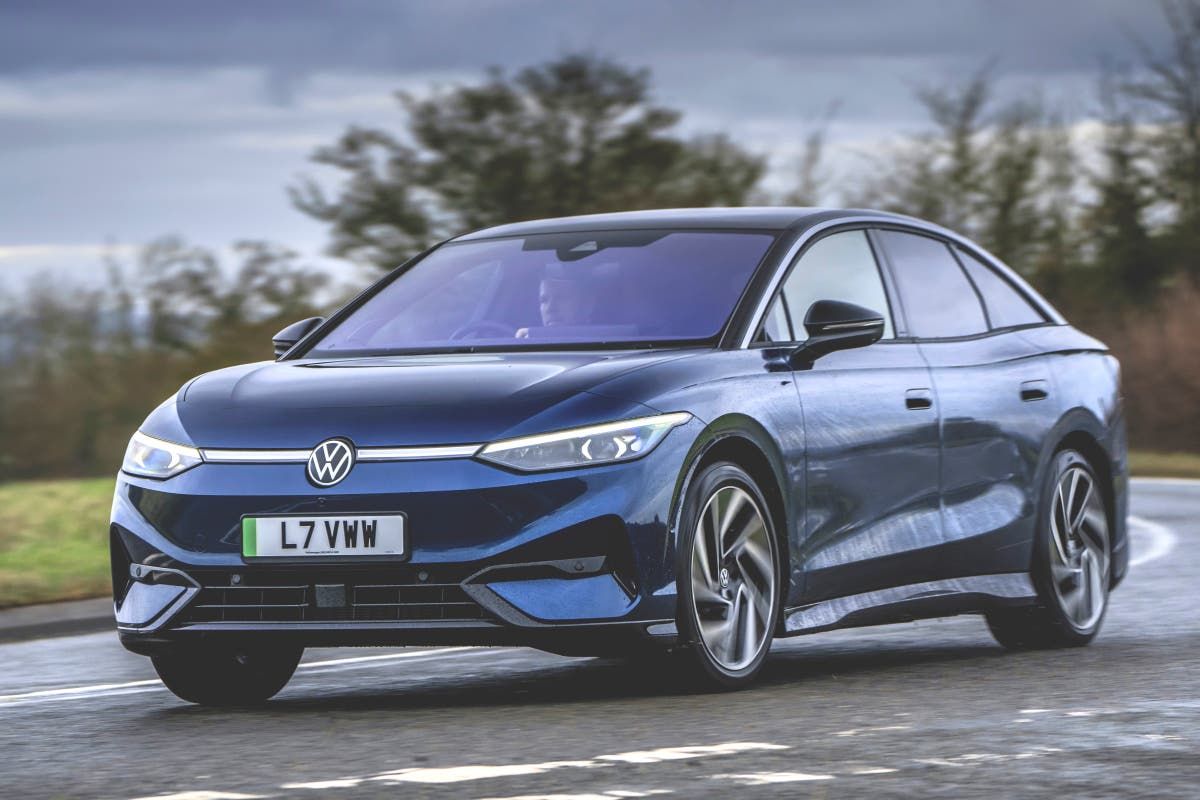tThe first thing that catches your attention about the all-electric Volkswagen ID.7 is its length. It's not what you'd call disproportionate, because it's basically a graceful, subtly sinewy thing, but at nearly five meters long and even taking into account its generous width, it looks like one of my sayings: Go on just a little. also long.
The ID.7 has subtle muscles and looks a lot like some of our Sean's quotes…
(Volkswagen)
The advantage, of course, is that this new VW flagship fastback (at the other end there is a hatch instead of a trunk) is endowed with a correspondingly long wheelbase and therefore has the kind of space and ride comfort expected from a vehicle of this type. .
In terms of the more conventional internal combustion engine models in the VW Group family, it's as generous as the famously spacious Skoda Superb, and not far behind the Bentley Continental Flying Spur. It is important to note, then, that VW engineers have been able to design a hypothetical replacement for the Passat without, in this case, resorting to the bulky lines of an SUV.
The interior is like sitting in a fairly well-appointed Sunday supplement-style lounge.
(Volkswagen)
Incidentally, an even more spacious ID.7 estate is also on the way, which, if anything, looks even more attractive than the fastback and promises even more of that supreme luxury of life: space. You have VW to thank for sticking with the estate concept, which ironically is a pretty radical move these days.
15-inch touchscreen has key controls that are more directly accessible
(Volkswagen)
The important lithium-ion battery pack (77 kWh) is “sandwiched” into the floor, and the resulting sacrifice in passenger and luggage capacity has been minimized. The feeling of sitting in a fairly well-equipped Sunday supplement-style lounge is completed by the presence of a 15-inch touchscreen on the front. It works much better than previous versions of this standard VW kit, and while it's overly complicated and inherently dangerous to use like any car's touchscreen, key controls have been made more directly accessible.
VW has been approved by the German campaign for a healthier back
(Volkswagen)
More sensibly, the audio, highly efficient and accurate satellite navigation system (down to lane-by-lane level) and adaptive cruise control are all easily accessed via small, precise buttons on the steering wheel. The display on the main dials is relatively small, but that's because much of the information you need is 'projected' onto the windscreen, as if you were actually on the road, using an advanced form of head-up display, meaning who will never need to take his eyes off the road.
You can get an additional range of over 100 miles with just 10 minutes of “filling up”
(Volkswagen)
It all contributes to the atmosphere of being in charge of a machine that does and tells you everything you want in the most optimal way.
It's all very clever too. An impressive feature, for example, is that the car will automatically warm up its battery for fast charging if you tell it to, or if you've programmed the sat nav to transport you to the nearest fast charging station. Once there, you can get an additional range of over 100 miles with a 10-minute “fill-up”; and from batteries almost discharged to 80 percent in half an hour (more than 80 percent and the charging speed slows down to protect battery life).
The ID.7 has plenty of luggage space in its 500-litre boot
(Volkswagen)
The other very distinctive aspect of the ID.7 is the way it drives. It feels very much like driving a full-size limousine, the kind of feeling I last remember experiencing in the (all-electric) BMW i7 and Mercedes-Benz EQS; the ID.7 really isn't that far off from that guy. of pinnacles.
THE SPECIFICATION
VW ID.7 286 HP
Price: From £51,550
Propulsion: Individual electric motors, powered by a 77 kWh battery.
Power (PS): 286
Maximum speed (mph): 112
0-60 (seconds): 6.5
Economy (miles per kWh): 3.7
Range (miles): 250-350
CO2 emissions: 0
As is common these days, you can set the car to Eco, Comfort, Sport and custom 'individual' modes, although they all work within the parameters of the ID.7's elegant personality.
The seats offer unusual support, are heated and are prepared for massages. VW is very proud to have been approved by Aktion Gesunder Rucken eV, the German campaign for a healthier back. I think it may be the first time; anyway, they work.
The all-electric ID.7 is a worthy flagship model from VW and is sure to be a bestseller.
(Volkswagen)
The cabin's heating and ventilation systems are also well above average and draft-free, apparently inspired by the old VW Phaeton model, an act of arrogance rarely seen from a previous generation of VW management.
I suspect the ID.7 will be a bigger seller than the Phaeton, and in its modern form is equally a worthy flagship for the VW-badged arm of the VW empire. He certainly deserves to succeed. In short: it is a joy.











